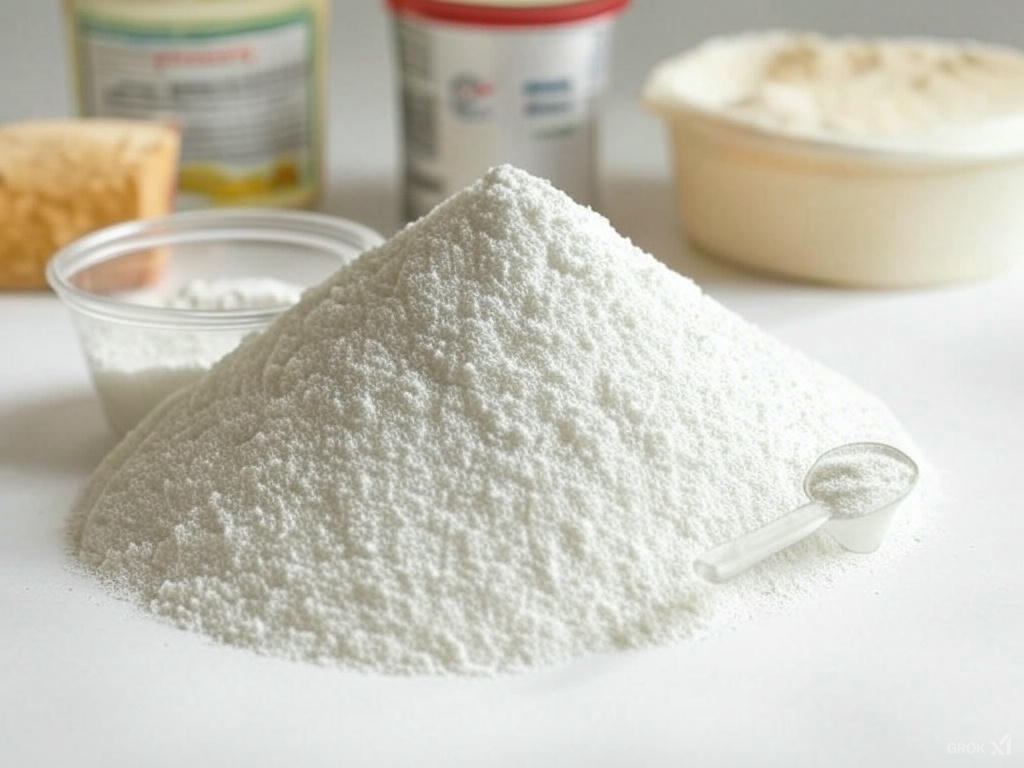Sodium Carboxymethyl Cellulose (CMC or Na-CMC) is a water-soluble polymer derived from cellulose through a chemical modification process that introduces carboxymethyl groups (-CH₂COONa) to the cellulose backbone. Its properties make it highly valuable across industries like food, pharmaceuticals, cosmetics, and more.
Physical Properties
- Appearance:
- Typically a white to off-white, odorless, and tasteless powder or granular solid.
- Can form transparent or slightly cloudy solutions depending on purity and concentration.
- Solubility:
- Highly soluble in water, forming clear, viscous solutions.
- Insoluble in organic solvents like ethanol, acetone, or benzene, though it may swell slightly in some polar solvents.
- Solubility increases with higher degrees of substitution (DS), which refers to the average number of carboxymethyl groups per glucose unit.
- Viscosity:
- Exhibits a wide range of viscosities depending on concentration, molecular weight, and DS.
- Solutions are pseudoplastic (shear-thinning), meaning viscosity decreases under shear stress (e.g., stirring) and recovers when stress is removed.
- Available in low, medium, and high viscosity grades tailored to specific applications.
- Hygroscopicity:
- Absorbs moisture from the air, which can affect storage stability if not kept in sealed conditions.
- Thermal Stability:
- Stable up to ~200°C (392°F), after which it begins to decompose, losing water and forming sodium salts or char.
- Solutions may thin out when heated but regain viscosity upon cooling if not degraded.
- Particle Size:
- Varies by grade (fine powder to coarse granules), influencing dissolution rate and handling.
Chemical Properties
- Chemical Structure:
- A derivative of cellulose (a β-1,4-glucan polymer) with carboxymethyl groups attached to hydroxyl groups (-OH) on the glucose units.
- Degree of substitution (DS) typically ranges from 0.4 to 1.5, affecting solubility and ionic behavior.
- Ionic Nature:
- Anionic polyelectrolyte due to the negatively charged carboxylate groups (-COO⁻Na⁺).
- Interacts with positively charged ions or molecules, influencing its behavior in solutions with salts or proteins.
- pH Sensitivity:
- Stable in a pH range of 4–10; solutions are typically neutral to slightly alkaline (pH 6.5–8.5).
- At low pH (<4), the carboxylate groups protonate (-COONa → -COOH), reducing solubility and forming gels or precipitates.
- At very high pH (>10), it remains stable but may lose some viscosity.
- Reactivity:
- Chemically inert under normal conditions but can form complexes with multivalent cations (e.g., Ca²⁺, Fe³⁺), leading to gelation or precipitation.
- Resistant to microbial degradation compared to native cellulose, though prolonged exposure to moisture can encourage breakdown.
- Biocompatibility:
- Non-toxic and biodegradable, breaking down into simpler carbohydrates and sodium salts in biological systems.
Functional Properties
- Thickening and Rheology Modification:
- Increases the viscosity of aqueous solutions even at low concentrations (0.1–2% w/v), making it an efficient thickener.
- Provides smooth, non-thixotropic flow in many cases, ideal for consistent textures.
- Water-Binding Capacity:
- Strong affinity for water due to its hydrophilic hydroxyl and carboxymethyl groups.
- Retains moisture in formulations, preventing drying or syneresis (liquid separation).
- Stabilization:
- Stabilizes emulsions (e.g., oil-in-water) and suspensions by increasing viscosity and preventing particle settling.
- Reduces phase separation in mixtures like paints or food emulsions.
- Film-Forming Ability:
- Dries into flexible, transparent films with good tensile strength, useful in coatings, edible films, or wound dressings.
- Films are water-soluble unless cross-linked.
- Binding and Adhesion:
- Acts as a binder by adhering particles together (e.g., in tablets, ceramics, or textiles).
- Enhances cohesion in wet or dry systems.
- Surface Activity:
- Mild surfactant-like behavior due to its amphiphilic nature (hydrophilic carboxymethyl groups and hydrophobic cellulose backbone), aiding in foam stabilization or emulsification.
- Gelation:
- Forms gels in the presence of multivalent cations (e.g., Al³⁺, Ca²⁺) or under acidic conditions, useful in controlled-release drugs or wound care products.
- Thermal Gelation (Limited):
- Unlike some polymers (e.g., methylcellulose), CMC does not gel upon heating; instead, it may lose viscosity unless chemically modified.
Factors Influencing Properties
- Degree of Substitution (DS):
- Higher DS increases solubility, viscosity, and ionic character; lower DS results in less water solubility and more fibrous behavior.
- Molecular Weight:
- Higher molecular weight increases viscosity and film strength but may slow dissolution.
- Purity:
- Food- and pharma-grade CMC has fewer impurities (e.g., sodium chloride, sodium glycolate) than industrial grades, affecting performance.
- Environmental Conditions:
- Temperature, pH, and ionic strength of the medium can alter viscosity, solubility, and stability.
Practical Implications
- Food: Its water-binding and thickening properties improve texture (e.g., ice cream smoothness) without adding calories.
- Pharma: Biocompatibility and controlled viscosity make it ideal for drug delivery systems.
- Industrial: Thermal stability and film-forming ability enhance coatings and adhesives.
- Cosmetics: Pseudoplastic flow ensures easy application and a luxurious feel in creams.
CMC’s properties are highly tunable, allowing manufacturers to select specific grades (e.g., high-viscosity for gels, low-viscosity for suspensions) based on the desired outcome.




